Art in public space
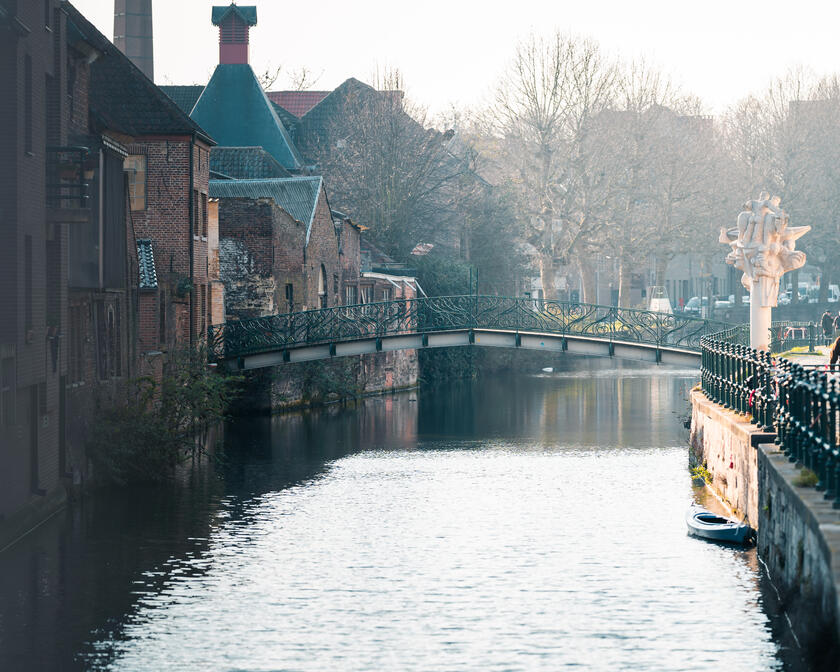
A characterful selection of works of art
3 km - 4000 steps

The route starts on Sint-Veerleplein square with a creation by Alberto Garutti. Every time a child is born in Ghent, the street lamps light up softly. A push on the button in one of the Ghent maternity clinics and the entire city celebrates the arrival of a new inhabitant.
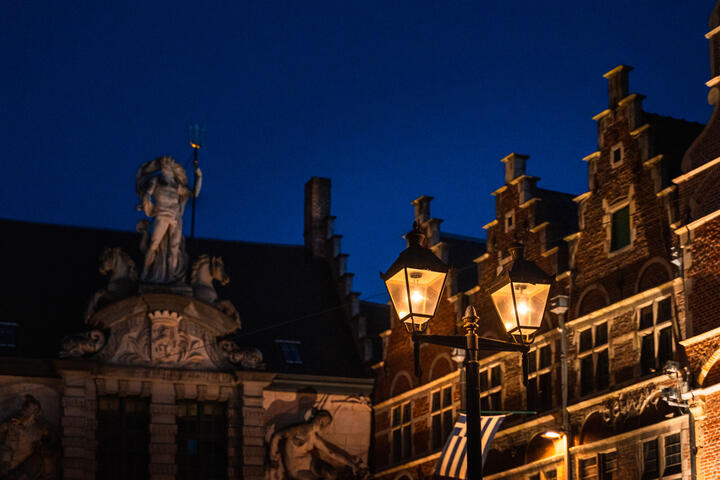
On the corner of Kraanlei and Hertogstraat, you can see two heads, one of a man and one of a women, forever separated from each other. The artist, Wim Delvoye, enabled the two lovers to weep. Their tears would allow moss to grow and the moss would eventually connect the heads. As yet, no tears have been shed and no moss has grown … Perhaps all will be well in the end.
The next stretch takes you from the Patershol neighbourhood to the Drongenhofkapel chapel.
At the back of the chapel, you can see a stained-glass window created by Wim Delvoye on the basis of X-rays. If you peep through a keyhole and watch very carefully, you will see a couple making love ...
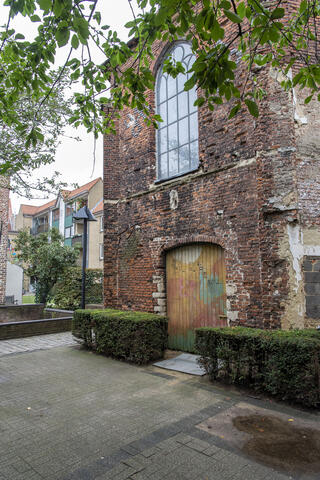
At number 6 Langesteenstraat, you can read a romantic poem by Johan Daisne about the origin of Ghent at the confluence of the rivers Lys and Scheldt. It may be a little corny and it’s certainly chauvinistic … but it’s written on the windows: Ghent is and remains their only child.
Via the former academy, you arrive at Molenaarsstraat. The façade of number 43 immediately catches the eye. The fluorescent camouflage pattern was conceived by artist Leo Copers. He named this work True Hero Command Post as a tribute to all fallen soldiers, who are the real heroes in his opinion.
Now retrace your steps so you can admire two works by Walter De Buck. The first one is called the Bridge of Imperial Delights, consisting of 4 sculptures that each refer to a different folktale about Holy Roman Emperor Charles V. Cross the bridge and you will see a second work in the garden of the community centre. “Taptoe Feest” was created to commemorate the 25th anniversary of the puppet theatre company Taptoe.
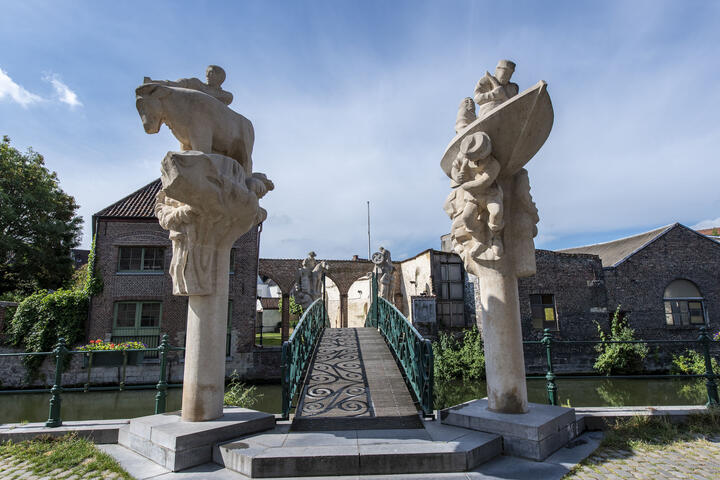
On the corner of Zilverhof and Pluimstraat, you can see a sculpture of a knitter. It was created by French artist Jean-Pierre Clémençon who used to live in this house. The work of art may symbolise the past, present and future. The past is represented by the classical columns. The knitter stands for the present and the everyday routine. The bars refer to the future.
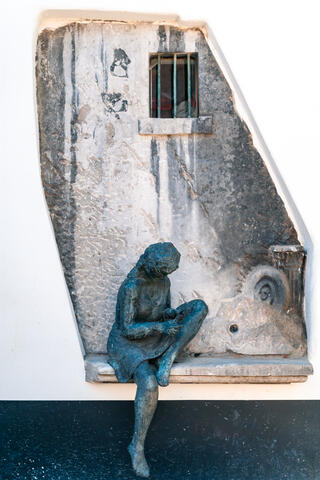
In Tinnenpotstraat, you will immediately notice the studio/museum of ceramist Frank Steyaert. The façades of these two 15th-century houses are a work of art in themselves. Frank and his brother Dirk renovated the houses with respect for the past and in combination with colourful ceramics.
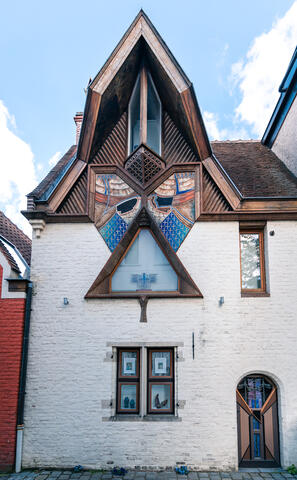
A tribute to Van Eyck, this diptych in Braderijstraat was created by Belgian artist STROOK. The two figures, a man and his mirror image, were made from recycled scrap wood found in Ghent.
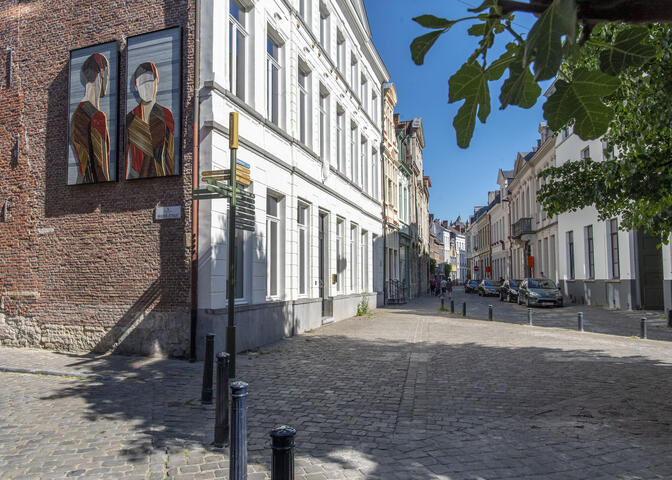
Artist Sofie Muller lives and works in this stately home on the Prinsenhof site. Don’t forget to look up to see Jonas hanging from the coat hooks.
Foxowl, on the public urinal next to the Lieve canal, is first-class street art. Cee Pil loves bizarre animals. This is a combination of a fox and an owl, nicely integrated into the surroundings.
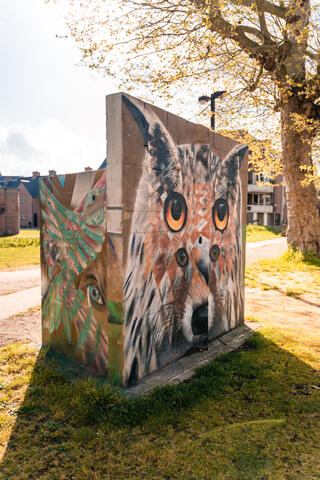
A bit further on, you can admire street art by A Squid Called Sebastian. This artist, who has a penchant for comics and figurative art, has added colour to the city.
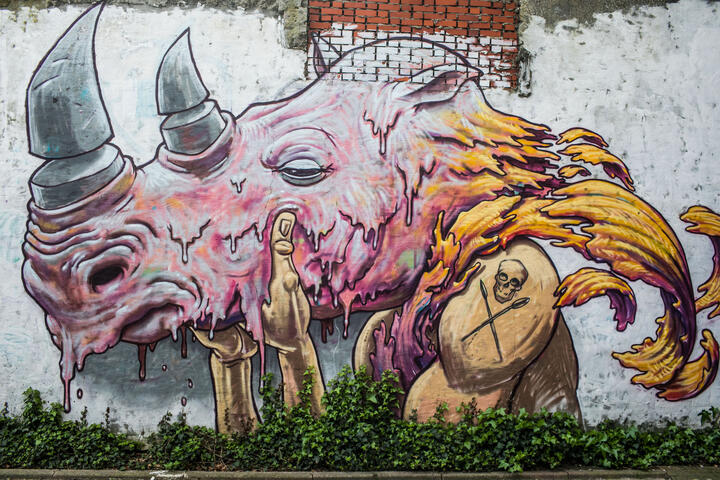
Located at the Great St Elizabeth beguinage, the sculpture titled “Bruges-la-Morte” is a tribute to Georges Rodenbach, the author of the book of the same name. This sculpture by Georges Minne was not welcome anywhere else at the turn of the 20th century. Having been refused by Bruges and Tournai, it ended in the beguinage. Bruges was furious with Rodenbach fur casting Bruges in an unflattering light. Tournai, Georges Rodenbach’s place of birth, was not interested either. So the sculpture ended up here, much to our delight!
Via Burgstraat, you can return to Sint-Veerleplein square and start again if you want!